
Drenthe Province: A Hidden Gem of Natural Beauty and History
Discover Drenthe Province: Explore breathtaking landscapes, ancient history, and charming villages in the heart of the Netherlands.
Drenthe Province, nestled in the northeastern part of the Netherlands, offers a serene escape into nature and history. Known for its expansive heathlands, ancient dolmens, and charming villages, Drenthe is a paradise for outdoor enthusiasts and history buffs alike. The province is dotted with national parks such as Dwingelderveld and Drents-Friese Wold, where you can hike, cycle, or simply relax amidst stunning landscapes. Drenthe's history is rich and evident everywhere you look. The iconic hunebedden, or ancient stone burial sites, date back to the Neolithic era and are scattered across the province. These prehistoric monuments provide a fascinating glimpse into early human civilization. Museums like the Drents Museum in Assen offer deeper insights into the region's archaeological treasures and cultural heritage. Village life in Drenthe is picturesque and tranquil. Towns like Orvelte and Diever are perfect for a leisurely stroll, offering a peek into traditional Dutch life with their thatched-roof houses and cobblestone streets. Local markets and festivals give you a taste of regional cuisine and customs, enhancing your cultural experience. Whether you're exploring nature trails or delving into history, Drenthe Province promises a fulfilling and memorable journey.
Local tips in Drenthe Province
- Visit the hunebedden early in the morning to avoid crowds and capture the best photos.
- Rent a bicycle to explore the extensive network of cycling paths through the national parks.
- Check the local calendar for market days and festivals to experience authentic Dutch culture.
- Stay in a traditional farmhouse or B&B for a unique and immersive experience.
- Don't miss the Drents Museum in Assen for a comprehensive look at the region's history and art.
Drenthe Province: A Hidden Gem of Natural Beauty and History
Drenthe Province, nestled in the northeastern part of the Netherlands, offers a serene escape into nature and history. Known for its expansive heathlands, ancient dolmens, and charming villages, Drenthe is a paradise for outdoor enthusiasts and history buffs alike. The province is dotted with national parks such as Dwingelderveld and Drents-Friese Wold, where you can hike, cycle, or simply relax amidst stunning landscapes. Drenthe's history is rich and evident everywhere you look. The iconic hunebedden, or ancient stone burial sites, date back to the Neolithic era and are scattered across the province. These prehistoric monuments provide a fascinating glimpse into early human civilization. Museums like the Drents Museum in Assen offer deeper insights into the region's archaeological treasures and cultural heritage. Village life in Drenthe is picturesque and tranquil. Towns like Orvelte and Diever are perfect for a leisurely stroll, offering a peek into traditional Dutch life with their thatched-roof houses and cobblestone streets. Local markets and festivals give you a taste of regional cuisine and customs, enhancing your cultural experience. Whether you're exploring nature trails or delving into history, Drenthe Province promises a fulfilling and memorable journey.
When is the best time to go to Drenthe Province?
Iconic landmarks you can’t miss
Wildlands
Explore Wildlands in Emmen, a captivating zoo and theme park showcasing diverse ecosystems and thrilling attractions for all ages.
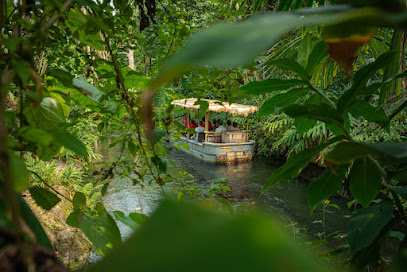
Center Parcs De Huttenheugte
Experience a perfect family getaway at Center Parcs De Huttenheugte, a holiday park blending nature, adventure, and relaxation in the heart of the Netherlands.
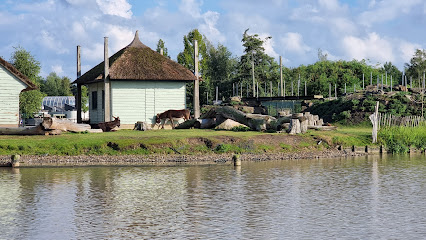
Drents Museum
Explore the Drents Museum in Assen, where art, archaeology, and history merge to tell the captivating story of the Drenthe region.

Hunebedcentrum
Uncover the ancient mysteries of the Netherlands at Hunebedcentrum, a captivating heritage museum showcasing prehistoric burial mounds.
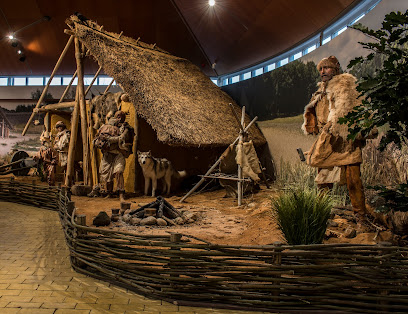
Dwingelderveld National Park
Discover the breathtaking beauty of Dwingelderveld National Park, a serene natural reserve perfect for hiking, wildlife watching, and nature exploration.
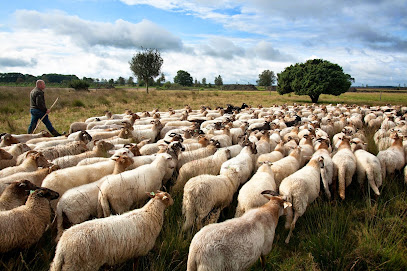
Veenpark
Experience history and fun at Veenpark, a heritage museum with playgrounds and themed attractions in the heart of the Netherlands.
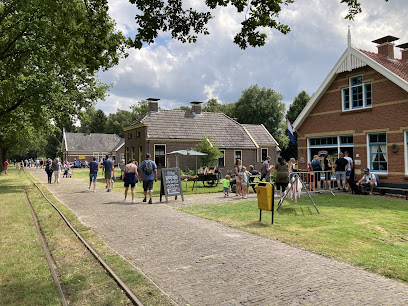
Serenga
Experience the beauty of wildlife at Serenga, a unique savanna-themed park in Emmen, showcasing exotic animals in their natural habitats.
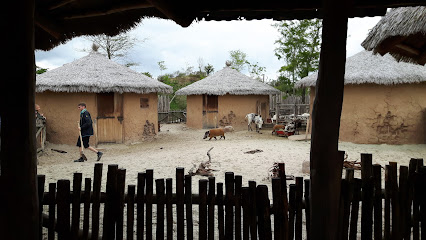
Bargerveen Nature Reserve
Discover the serene landscapes and rich biodiversity at Bargerveen Nature Reserve, a tranquil escape in Emmen, Netherlands.
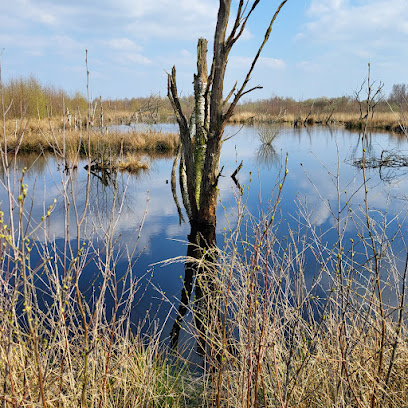
Sprookjeshof Zuidlaren
Explore the magical world of Sprookjeshof Zuidlaren, a fairy tale playground perfect for families and children seeking fun in the Netherlands.
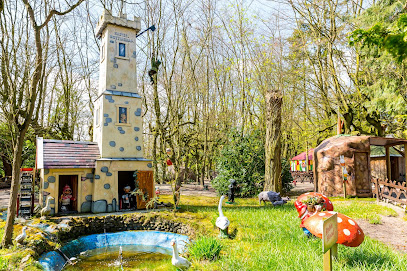
Joytime Leisure activities Grolloo
Experience the thrill of rock climbing, high ropes courses, and family fun at Joytime Leisure Activities in Grolloo, the ultimate adventure destination.
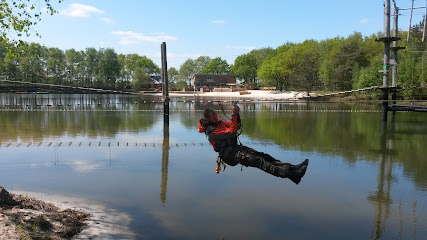
Havixhorst
Discover the elegance of Havixhorst, a luxurious hotel and event venue in the heart of the Dutch countryside, perfect for relaxation and celebration.

Butterfly paradise Papiliorama
Experience the magic of nature at Butterfly Paradise Papiliorama, where vibrant butterflies and exotic wildlife create an unforgettable adventure.
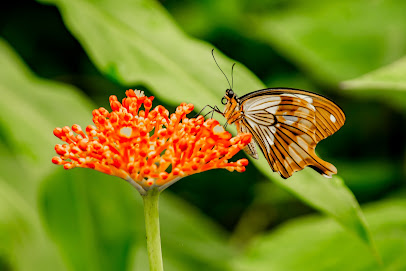
Jungola
Experience the magic of Jungola, a tropical indoor paradise in Emmen, where adventure, nature, and education come together for all ages.

Dolmen D45
Explore Dolmen D45 in Emmen, a captivating prehistoric landmark that reveals the mysteries of ancient burial practices amidst stunning natural surroundings.
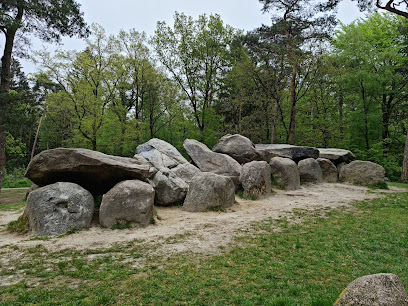
Buitenplaats Villa BlauwHemel Diever
Experience tranquility and elegance at Buitenplaats Villa BlauwHemel, a perfect retreat for relaxation and memorable events in Diever, Drenthe.
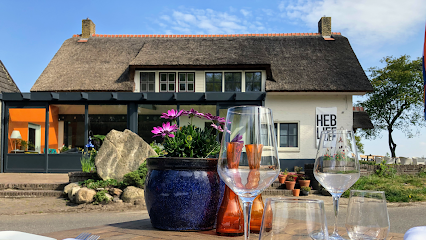
Unmissable attractions to see
Drouwenerzand Attractiepark B.V.
Experience the thrill of family fun at Drouwenerzand Attractiepark, an amusement park filled with excitement and adventure in the heart of the Netherlands.
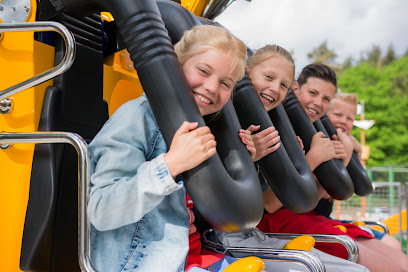
Hunebedcentrum
Discover the ancient burial mounds and rich heritage of the Netherlands at Hunebedcentrum, where history comes alive!
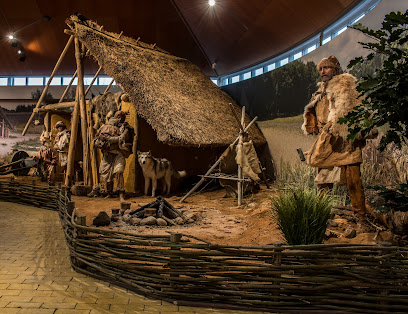
Dwingelderveld National Park
Discover the breathtaking landscapes and diverse wildlife of Dwingelderveld National Park, a must-see destination for nature enthusiasts in the Netherlands.
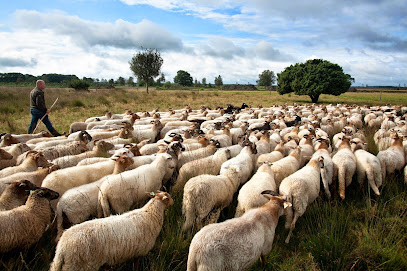
Veenpark
Explore Veenpark: A perfect blend of adventure and heritage, where families create unforgettable memories in the heart of the Netherlands.
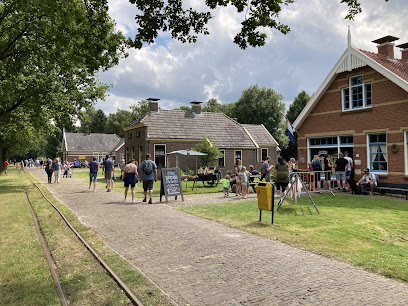
Asserbos
Explore Asserbos, a serene national forest near Assen, perfect for hiking, cycling, and enjoying nature's beauty.
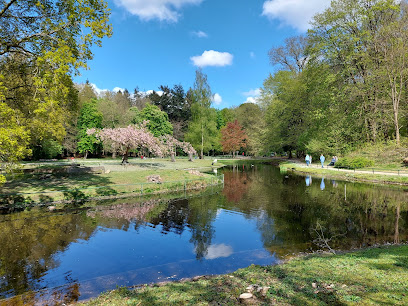
Serenga
Experience the magic of wildlife at Serenga, Emmen's premier attraction for animal lovers and adventure seekers alike.
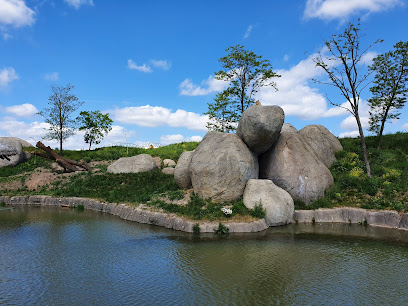
Bargerveen Nature Reserve
Experience the breathtaking landscapes and diverse wildlife at Bargerveen Nature Reserve in Emmen, a perfect retreat for nature lovers and outdoor enthusiasts.
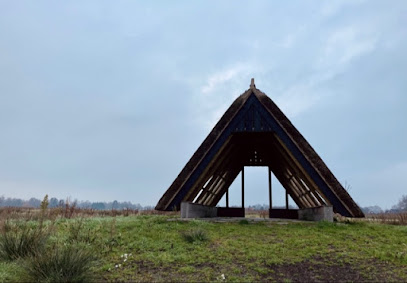
Jungola
Discover the enchanting tropical paradise of Jungola in Emmen, filled with exotic wildlife, lush greenery, and immersive educational experiences.

Domino's Pizza Heerenveen
Delight in the delicious variety of pizzas at Domino's Pizza Heerenveen, your go-to spot for quick and tasty meals in the heart of the city.

Schaapskooi Achter 't Zaand
Experience the peaceful allure of Schaapskooi Achter 't Zaand, where traditional sheep herding meets the stunning landscapes of Drenthe's national reserve.
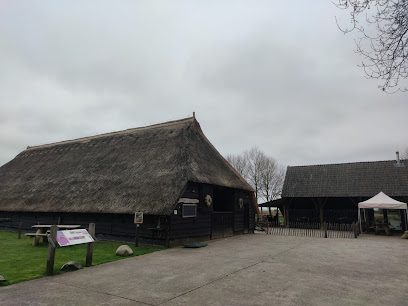
Nationaal beek- en esdorpenlandschap Drentsche Aa
Explore the serene landscapes and rich biodiversity of Nationaal Beek- en Esdorpenlandschap Drentsche Aa - a hidden gem in the heart of the Netherlands.
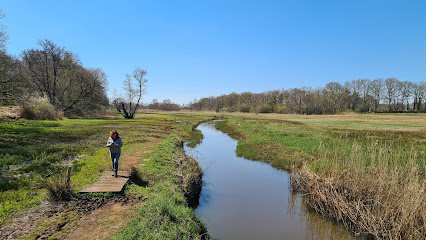
Nationaal Tinnen Figuren Museum
Explore the captivating world of tin figures at the Nationaal Tinnen Figuren Museum in Ommen, where history comes alive through intricate craftsmanship.
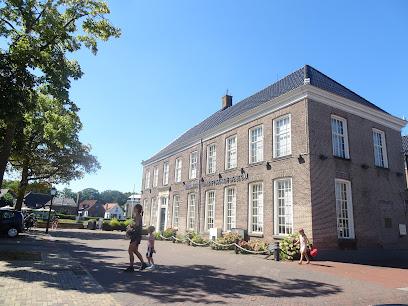
Rensen Theater Emmen
Experience the vibrant performing arts scene at Rensen Theater Emmen, where captivating performances await in a modern setting.
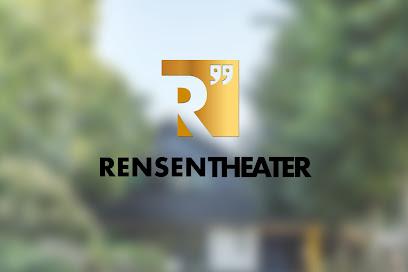
Drents-Friese Wold National Park
Explore the stunning landscapes of Drents-Friese Wold National Park, a natural wonder in the Netherlands, perfect for hiking, cycling, and wildlife watching.
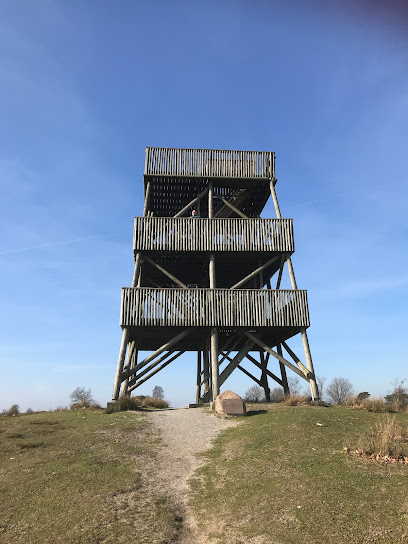
De Plek - locatie Het Oude Raadhuis (voorheen van Swinderen Huys)
Experience the elegance of De Plek, a historic event venue in Groningen perfect for conferences, weddings, and unforgettable celebrations.
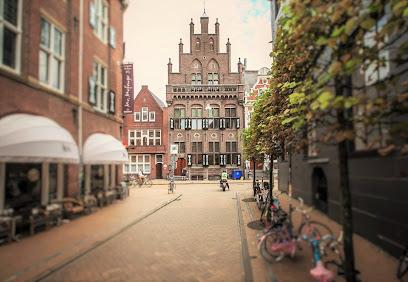
Essential places to dine
De Bospub
Experience delightful dining at De Bospub amidst stunning natural landscapes in Dwingeloo.
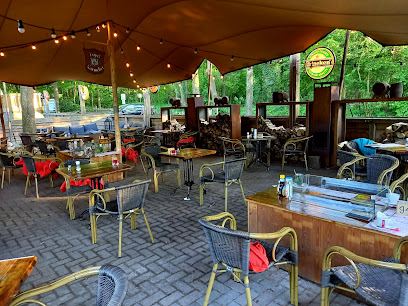
Paviljoen Nijstad
Discover Paviljoen Nijstad: A delightful restaurant in Hoogeveen offering delicious local cuisine amidst beautiful natural surroundings.
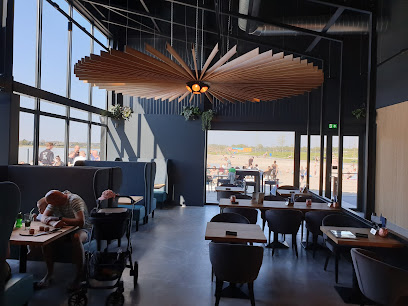
Robin Hood Ribhouse
Experience mouthwatering ribs and warm Dutch hospitality at Robin Hood Ribhouse in Drouwen – perfect for food lovers seeking authentic flavors.
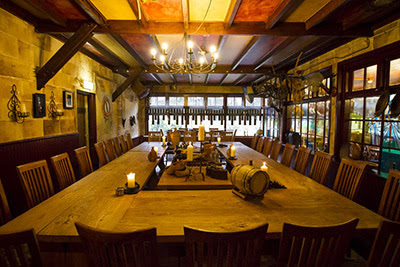
Diggels
Experience delightful dining at Diggels in Westerbork – where local flavors meet warm hospitality.
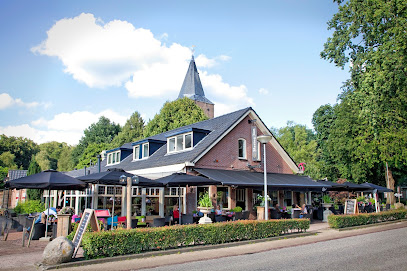
Restaurant & Grandcafé Liff
Discover exceptional flavors at Restaurant & Grandcafé Liff in Assen, where local ingredients meet international cuisine in a vibrant atmosphere.

De Drentsche Aa
Discover De Drentsche Aa: A charming restaurant offering exquisite local cuisine amid breathtaking natural landscapes in the Netherlands.
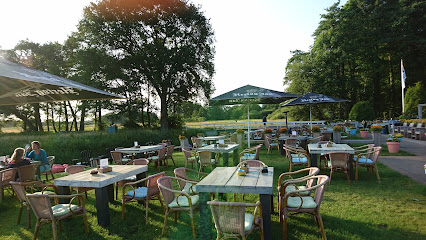
Het Wapen van Schotland
Experience authentic Dutch cuisine at Het Wapen van Schotland in Hooghalen - where tradition meets taste in a charming setting.
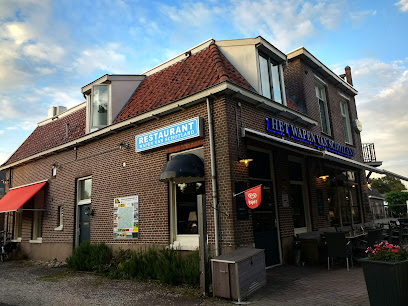
Restaurant de Ar
Experience authentic Dutch cuisine at Restaurant de Ar in Westerbork – where tradition meets modern culinary artistry.
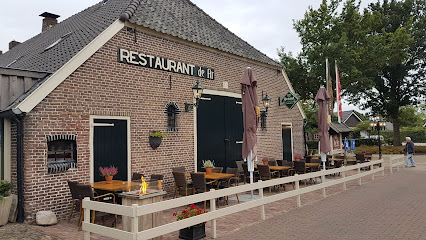
Hotel-Restaurant Abdij de Westerburcht
Discover culinary delights and serene accommodations at Hotel-Restaurant Abdij de Westerburcht in Westerbork.

't Oelnbret Restaurant
Discover the flavors of Dutch cuisine at 't Oelnbret Restaurant in Dalen – where every dish tells a story.
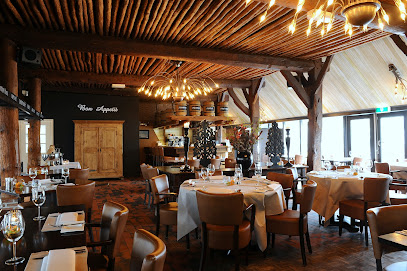
LUDIEK eten - slapen
Discover the perfect blend of dining and accommodation at Ludiek Eten - Slapen in charming Havelte, where culinary excellence meets cozy hospitality.

Narline
Discover authentic Dutch cuisine at Narline in Zuidwolde—where delicious food meets warm hospitality in a beautiful setting.
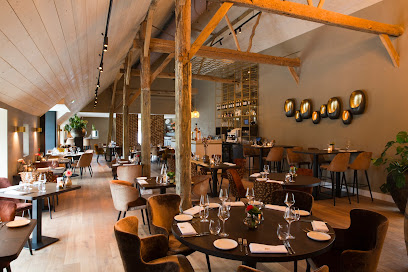
Restaurant Sukade
Experience exquisite dining at Restaurant Sukade in Meppel, where local flavors meet international cuisine in a cozy waterfront setting.
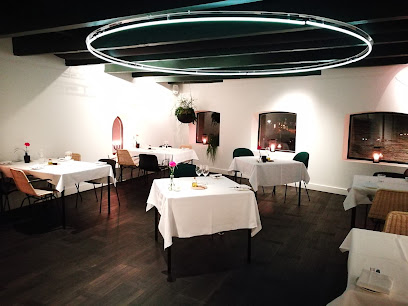
Restaurant Het Wapen van Drenthe
Discover authentic Dutch cuisine at Het Wapen van Drenthe - where local flavors meet warm hospitality in beautiful Roden.
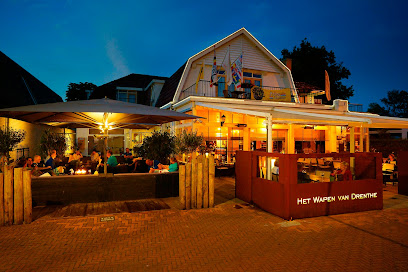
Herberg de Loohoeve
Experience authentic Dutch hospitality at Herberg de Loohoeve - your cozy inn and restaurant in scenic Schoonloo.
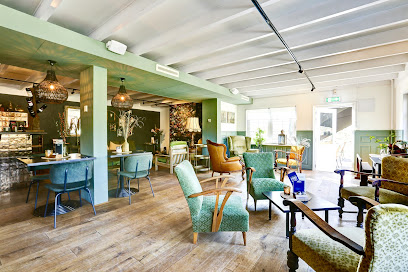
Markets, malls and hidden boutiques
The Passage
Explore The Passage, a historical shopping arcade in The Hague, where modern boutiques and charming cafes meet stunning neo-Gothic architecture.
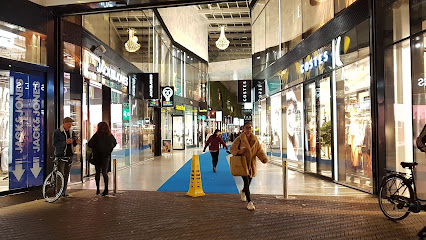
Winkelcentrum Paddepoel
Discover a shopper's paradise at Winkelcentrum Paddepoel in Groningen, where diverse stores meet delightful dining experiences.
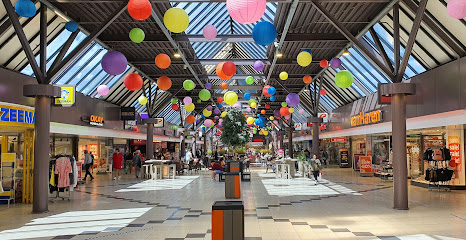
Winkelcentrum de Weiert
Explore Winkelcentrum de Weiert, Emmen's premier shopping destination, offering diverse stores, delightful dining, and exciting events for all ages.
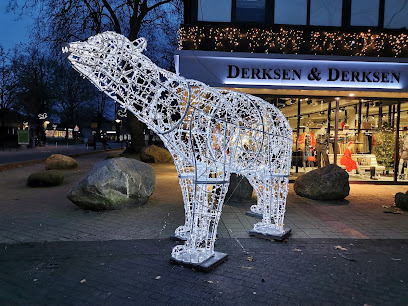
Winkelcentrum De Triade
Discover the vibrant shopping experience at Winkelcentrum De Triade, where local culture meets a diverse range of stores and dining options.

Winkelcentrum Vredeveld
Discover a vibrant shopping experience at Winkelcentrum Vredeveld in Assen, offering a mix of fashion, dining, and local culture.
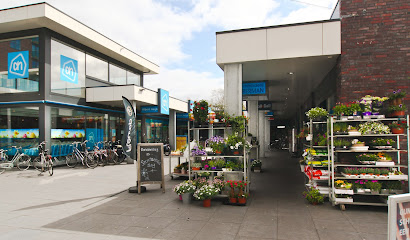
Welkoop Marwijksoord
Explore Welkoop Marwijksoord: Your one-stop destination for vibrant plants and quality pet supplies in the heart of Marwijksoord.
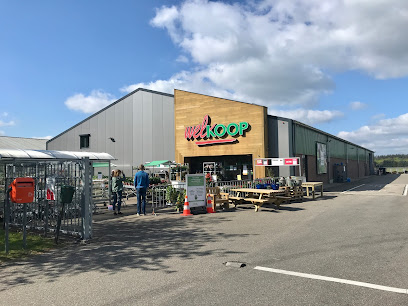
AH Grolloerstraat
Explore local flavors at AH Grolloerstraat, Rolde's vibrant supermarket offering fresh produce and Dutch specialties.
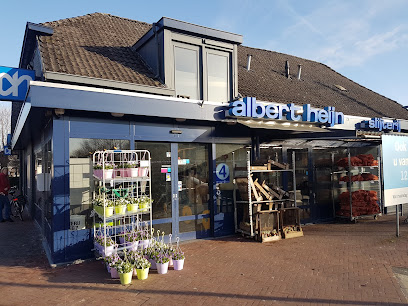
Noordermarkt
Discover the lively Noordermarkt in Nooitgedacht: a delightful supermarket brimming with fresh produce, local delicacies, and unique finds for every traveler.
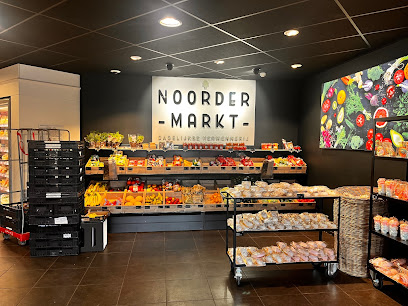
Country Store Goense
Experience the authentic charm of Country Store Goense in Marwijksoord, where local products and handcrafted treasures await every visitor.
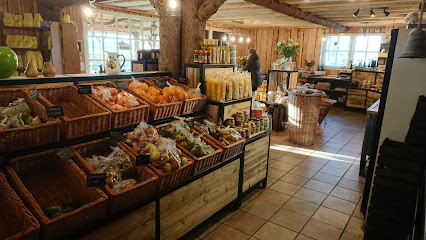
Vreugdenhil - Mooimakers voor uw tuin
Explore Vreugdenhil - Mooimakers voor uw tuin, a beautiful garden center in Eldersloo, offering a wide range of plants, tools, and expert gardening advice.
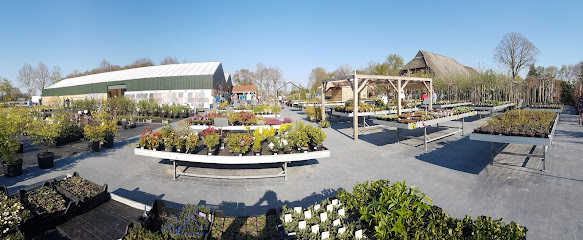
de Ruiner Bazar
Explore De Ruiner Bazar in Ruinen, Netherlands - your ultimate shopping destination for unique finds and local specialties amidst a charming atmosphere.
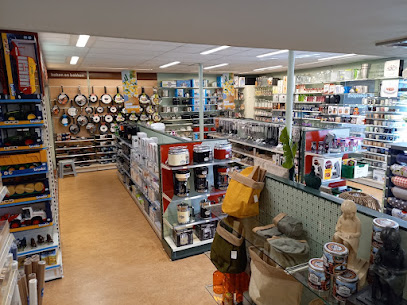
Hippe Kringloop
Explore Hippe Kringloop in Assen for unique vintage finds and sustainable shopping experiences in a charming thrift store atmosphere.
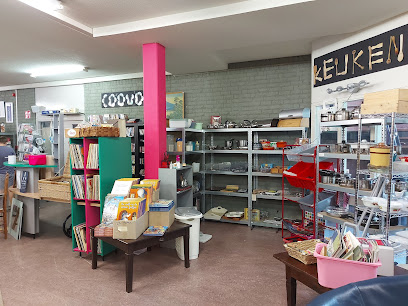
Winkelcentrum d'Anloop
Discover Winkelcentrum d'Anloop in Annen, a premier shopping destination offering diverse retail options and delightful dining experiences.
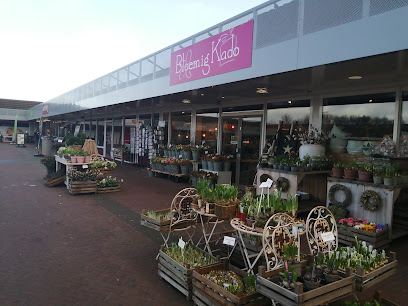
Bastaa!
Explore a treasure trove of unique gifts at Bastaa! in Assen, where fashionable accessories meet home goods in a charming atmosphere.
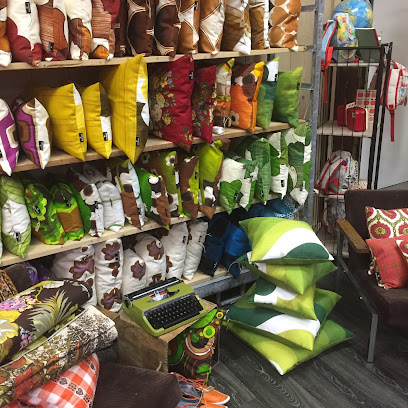
Art-Quake, lijstenmakerij
Discover unique artistic gifts and custom framing at Art-Quake, the heart of creativity in Assen.
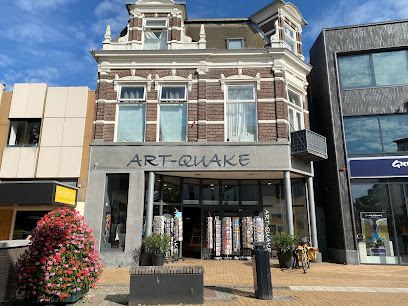
Essential bars & hidden hideouts
Hotel Restaurant ten Cate Emmen
Experience the perfect blend of comfort and culinary delight at Hotel Restaurant ten Cate Emmen, your ideal getaway in the heart of the city.
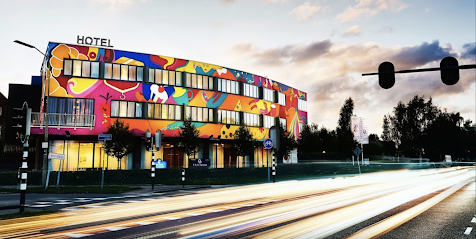
Hotel-Restaurant Abdij de Westerburcht
Experience the perfect blend of relaxation and fine dining at Hotel-Restaurant Abdij de Westerburcht in Westerbork, a true gem for travelers.

Iers Restaurant & Pub De Turfsteker
Discover the heart of Ireland in Westerbork at De Turfsteker, where authentic cuisine meets lively pub culture.
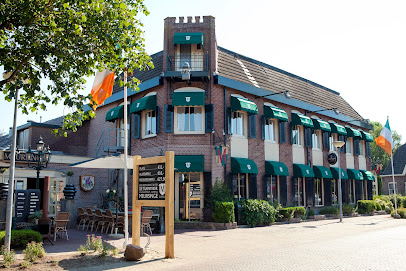
Hotel Wesseling
Discover the charm of Dwingeloo at Hotel Wesseling, where comfort meets local culture in the heart of Drenthe.
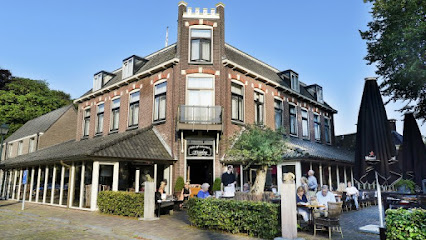
LUDIEK eten - slapen
Discover culinary delights and cozy accommodations at LUDIEK Eten - Slapen in the picturesque village of Havelte, Netherlands.
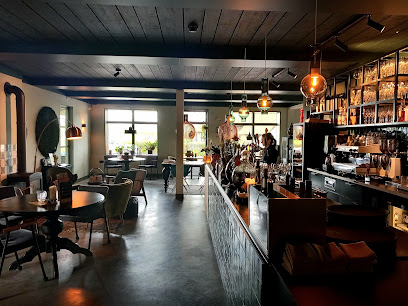
Zusjes de Boer
Discover the flavors of Assen at Zusjes de Boer, where local ingredients meet culinary excellence in a warm and inviting atmosphere.
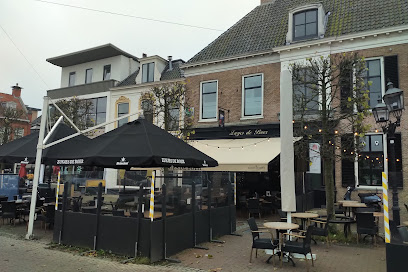
Hotel Onder De Linden
Discover the charm of Roden at Hotel Onder De Linden, where comfort meets local cuisine in a vibrant setting.

City Hotel de Jonge
Experience the essence of Dutch cuisine at City Hotel de Jonge, a culinary gem in Assen, offering local flavors and seasonal delights.
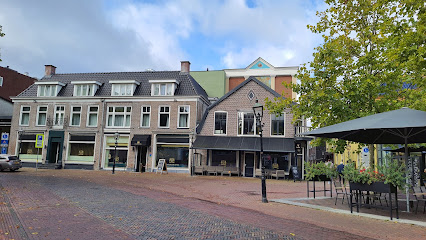
Herberg de Fazant
Discover Herberg de Fazant, where rustic charm meets exquisite dining in the heart of Oudemolen, Netherlands.

De Herberg van Loon
Discover the charm of De Herberg van Loon, where comfortable lodging meets exceptional local cuisine in a tranquil setting.

The Cabin
Experience the unique blend of bar, café, and restaurant at The Cabin in Groningen, where local flavors meet a cozy atmosphere.
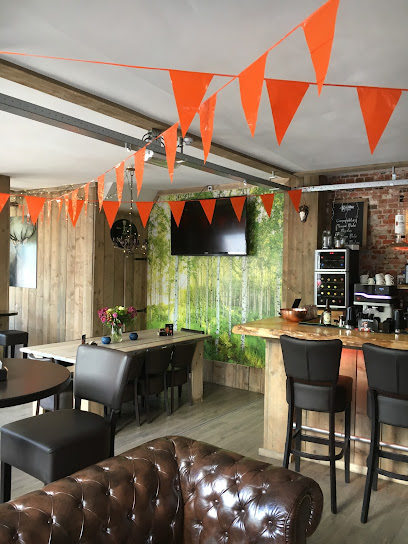
Animazia
Discover the wonders of wildlife at Animazia, a family-friendly attraction in Emmen, offering adventure, education, and fun for all ages.
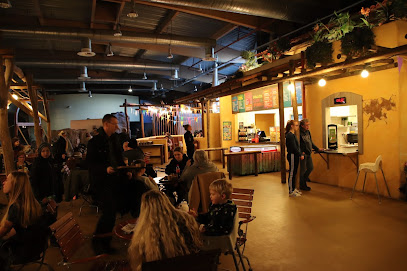
Yankee Doodle Emmen
Discover a vibrant dining experience at Yankee Doodle Emmen, where delicious cuisine meets a lively atmosphere for food lovers.
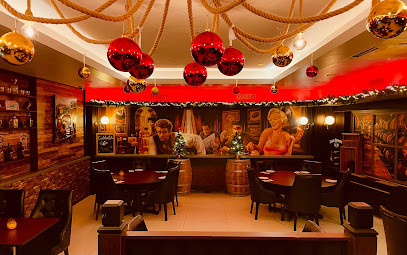
Don Juan
Experience the essence of Spain in Groningen at Don Juan, where every dish is a celebration of authentic Spanish cuisine.
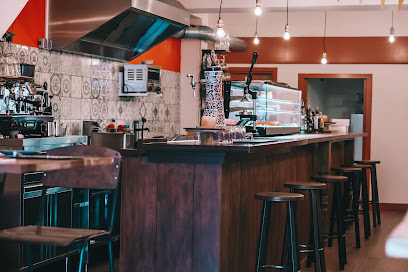
Bart & Bites - Beilen
Experience a blend of fun and flavor at Bart & Bites, Beilen's top amusement center, perfect for families seeking unforgettable moments.

Local Phrases about Drenthe Province
-
- HelloHallo
[ha-lo] - GoodbyeDag
[dahg] - YesJa
[ya] - NoNee
[nee] - Please/You're welcomeAlstublieft
[ahl-stu-bleeft] - Thank youDank je wel
[dank ye vel] - Excuse me/SorrySorry
[sor-ry] - How are you?Hoe gaat het met je?
[hu guht het met ye] - Fine. And you?Goed. En met jou?
[ghoot. en met yow] - Do you speak English?Spreek je Engels?
[spreek ye eng-elss] - I don't understandIk begrijp het niet
[ik buh-greyp het neet]
- HelloHallo
-
- I'd like to see the menu, pleaseIk wil graag de menukaart zien, alstublieft
[ik vil khraag deh meh-nu-kart seen ahl-stu-bleeft] - I don't eat meatIk eet geen vlees
[ik eet khayn vleys] - Cheers!Proost!
[prohst] - I would like to pay, pleaseIk wil graag betalen, alstublieft
[ik vil khraag buh-tah-len ahl-stu-bleeft]
- I'd like to see the menu, pleaseIk wil graag de menukaart zien, alstublieft
-
- Help!Help!
[help] - Go away!Ga weg!
[ga veg] - Call the Police!Bel de politie!
[bel deh poh-lee-see] - Call a doctor!Bel een dokter!
[bel ayn dok-ter] - I'm lostIk ben verdwaald
[ik ben ver-dwahld] - I'm illIk ben ziek
[ik ben zik]
- Help!Help!
-
- I'd like to buy...Ik wil graag kopen...
[ik vil khraag koh-pen] - I'm just lookingIk kijk alleen maar
[ik khayk a-layn mahr] - How much is it?Hoeveel kost het?
[hoo-vale kost het] - That's too expensiveDat is te duur
[dat is tay doo-r] - Can you lower the price?Kunt u de prijs verlagen?
[kunt u deh prays fayr-lah-khen]
- I'd like to buy...Ik wil graag kopen...
-
- What time is it?Hoe laat is het?
[hu laht is het] - It's one o'clockHet is een uur
[het is ayn ur] - Half past (10)Half elf
[hahlf elf] - MorningOchtend
[okhtend] - AfternoonMiddag
[mid-dahg] - EveningAvond
[ah-vohnd] - YesterdayGisteren
[gis-teh-ren] - TodayVandaag
[van-dahkh] - TomorrowMorgen
[mohr-khen] - 1Een
[ayn] - 2Twee
[tway] - 3Drie
[dree] - 4Vier
[veer] - 5Vijf
[vayf] - 6Zes
[zehs] - 7Zeven
[zeh-ven] - 8Acht
[ahkht] - 9Negen
[nay-ghen] - 10Tien
[teen]
- What time is it?Hoe laat is het?
-
- Where's a/the...?Waar is een/de...?
[var is ayn/deh] - What's the address?Wat is het adres?
[vat is het ah-dres] - Can you show me (on the map)?Kunt u mij laten zien (op de kaart)?
[kunt u may la-ten zeen (op deh kart)] - When's the next (bus)?Wanneer is de volgende (bus)?
[ven-nar is deh vol-gen-deh (bus)] - A ticket (to ....)Een kaartje (naar ....)
[ayn kart-ye (nar)]
- Where's a/the...?Waar is een/de...?
History of Drenthe Province
-
Drenthe Province is renowned for its prehistoric dolmens, known locally as 'hunebedden'. These ancient megalithic tombs date back to the Neolithic era, around 3400-2850 BCE. Constructed by the Funnel Beaker Culture, these stone structures served as burial sites and are among the oldest monuments in the Netherlands. The largest hunebed, D27, located near Borger, is a must-visit, showcasing the impressive engineering skills of prehistoric societies.
-
By the early Middle Ages, Drenthe was predominantly inhabited by the Saxons. This period saw the establishment of various small, agrarian communities. The Saxons left a lasting cultural imprint on the region, influencing local dialects and traditions. Some of the oldest churches in Drenthe, such as the St. Magnus Church in Anloo, have roots that trace back to this era.
-
During the medieval period, Drenthe was largely governed by local nobility under the feudal system. The province was part of the Bishopric of Utrecht, which held significant ecclesiastical and temporal power. The remnants of medieval castles and estates, such as the ruins of Kasteel Coevorden, offer a glimpse into the region's feudal past.
-
In the 16th and 17th centuries, the vast peat bogs of Drenthe attracted settlers who began extracting peat for fuel. This led to the development of the 'veenhuizen' or peat colonies. The village of Veenhuizen, originally a peat colony, later became a notable site for its 19th-century penal colonies, now a UNESCO World Heritage site. The area provides insightful tours into its unique social history.
-
Drenthe played a significant role during World War II due to the Westerbork Transit Camp, originally established in 1939 for Jewish refugees escaping Nazi persecution. During the German occupation, it became a transit camp from which over 100,000 Jews, including Anne Frank, were deported to concentration camps. The Camp Westerbork Memorial Center now stands as a poignant reminder of this dark chapter in history.
-
Post-World War II, Drenthe saw considerable development in agriculture, industry, and tourism. The region's natural beauty, characterized by heathlands, forests, and national parks like Dwingelderveld and Drents-Friese Wold, attract numerous visitors. Modern Drenthe maintains a balance between preserving its rich historical heritage and embracing contemporary advancements.
Drenthe Province Essentials
-
Drenthe Province is situated in the northeastern part of the Netherlands. The nearest major international airport is Amsterdam Schiphol Airport (AMS), which is approximately 170 kilometers away. From Schiphol, you can take a direct train to Assen, the capital of Drenthe, which takes about 2 hours. Alternatively, you can rent a car at the airport and drive to Drenthe, which offers flexibility to explore the region at your own pace.
-
Drenthe is well-connected by public transport. The main cities and towns are accessible by train and bus services. Bicycling is highly recommended for exploring the countryside and smaller villages, as the province is known for its extensive network of cycling paths. Car rentals are also available, providing convenience for visiting remote areas. Taxis and ride-sharing services like Uber are available but less common in rural areas.
-
The official currency of the Netherlands is the Euro (EUR). Credit and debit cards are widely accepted in most establishments, including restaurants, shops, and hotels. It is advisable to carry some cash for smaller vendors, local markets, and rural areas where card payments might not be accepted. ATMs are readily available in major towns and cities.
-
Drenthe is generally a very safe destination for tourists. Violent crime is rare, but it is always wise to take standard precautions. Avoid leaving bags and personal items unattended and be cautious in crowded places to prevent pickpocketing. There are no specific high-crime areas targeting tourists, but staying vigilant and aware of your surroundings is always advisable.
-
In case of emergency, dial 112 for immediate assistance, which is the general emergency number in the Netherlands. Major towns in Drenthe have hospitals and medical facilities. Pharmacies are available for minor health issues and over-the-counter medications. It is recommended to have travel insurance that covers medical emergencies.
-
Fashion: Do dress comfortably and appropriately for the weather. Casual wear is generally acceptable, but avoid overly revealing clothing. Religion: Do respect local customs and traditions, especially when visiting churches or religious sites. Public Transport: Do use public transport etiquette; offer your seat to elderly passengers and avoid loud conversations. Don’t eat or drink on public transport. Greetings: Do greet people with a friendly 'Hallo' or 'Goedendag.' A handshake is common. Eating & Drinking: Do try local delicacies and be polite when offered food. Don’t refuse hospitality, as it may be considered impolite.
-
To experience Drenthe like a local, rent a bicycle and explore the numerous cycling paths that cover the scenic landscapes. Visit local markets to buy fresh produce and traditional Dutch goods. Engage with locals, who are often friendly and willing to share stories about the area’s history and culture. Don’t miss visiting the prehistoric dolmens (hunebedden) that are scattered across the province, as they offer a glimpse into ancient history. For a unique experience, attend one of the local festivals or events to immerse yourself in the regional culture.
Trending Landmarks in Drenthe Province
Nearby Cities to Drenthe Province
-
Things To Do in Zwolle
-
Things To Do in Arnhem
-
Things To Do in Amersfoort
-
Things To Do in Munster
-
Things To Do in Amsterdam
-
Things To Do in Nijmegen
-
Things To Do in Utrecht
-
Things To Do in Bremen
-
Things To Do in Haarlem
-
Things To Do in Essen
-
Things To Do in Leiden
-
Things To Do in Rotterdam
-
Things To Do in The Hague
-
Things To Do in Delft
-
Things To Do in Eindhoven










